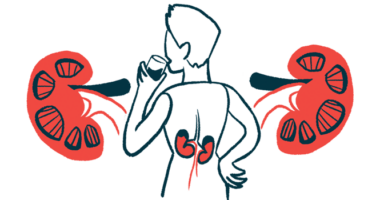Infection with Shiga toxins shouldn’t exclude aHUS diagnosis: Study
Literature search showed 11 patients initially diagnosed with STEC-HUS

Genetic testing may allow for the timely use of anti-complement therapy for atypical hemolytic uremic syndrome (aHUS), even if an infection with Shiga toxin-producing Escherichia coli (STEC), a trigger of the typical form of the disease, is present and initially upstages the correct diagnosis of aHUS.
In a review of 11 patients who had both aHUS and a STEC infection, plus the newly reported case of 9-year-old boy, researchers observed that those who were started early on anti-complement therapy with Soliris (eculizumab) didn’t progress to kidney failure, a complication of either form of the disease.
“Genetic testing can be helpful in patients with atypical presentations and can confirm the necessity of prolonged anti-complement therapy,” the researchers wrote in the study, “Shiga toxin-producing Escherichia coli infection as a precipitating factor for atypical hemolytic-uremic syndrome,” published in Pediatric Nephrology.
In aHUS, problems with the complement pathway, a part of the immune system that defends the body against invading microbes, cause blood clots to form in small blood vessels, leading to symptoms. In the typical form of the disease, called STEC-HUS, symptoms are caused by Shiga toxins produced by E. coli bacteria.
While aHUS is a diagnosis of exclusion, and STEC-HUS is the first to rule out, “in very rare cases, a STEC infection and a genetically based or acquired alteration in the complement pathway may coexist,” the researchers wrote. STEC can also trigger symptoms in patients with a “predisposing genetic background.”
STEC-HUS, then a suspected aHUS diagnosis
Here, researchers write about a 9-year-old boy in Italy who was first seen with a fever and vomiting that resolved on their own within a week. Three weeks later, however, he was hospitalized because he couldn’t urinate and was having seizures. He also had high blood pressure.
Blood tests revealed a combination of hemolytic anemia (red blood cell destruction), thrombocytopenia (low platelet count), and damage to the kidneys and heart, all of which can be hallmark symptoms of thrombotic microangiopathy, a group of diseases that includes aHUS.
The boy was started on Soliris, an anti-complement therapy marketed by Alexion, AstraZeneca Rare Disease, alongside supportive therapies, including antihypertensive medications to lower his blood pressure, blood transfusions, and dialysis, which removes extra fluid and waste from the blood when the kidneys are damaged and not working well.
After three doses of Soliris, the boy’s clinical condition improved and anti-complement therapy was stopped. His kidneys began to recover and he no longer needed dialysis every day. A stool test revealed the presence of Shiga toxins, which led doctors to suspect STEC-HUS.
During his fifth week in the hospital, the boy had nausea, vomiting, and abdominal pain. He had high blood pressure and his kidneys were again not working well. MRI scans revealed posterior reversible encephalopathy syndrome, a swelling in the brain that can occur as a result of high blood pressure, causing seizures.
The boy was restarted on dialysis and hemolytic anemia and thrombocytopenia manifested in the following days, leading doctors to suspect aHUS. He restarted Soliris and this resulted in gradual clinical improvement, but the boy developed chronic kidney disease and doctors switched him to Ultomiris (ravulizumab), a longer-acting anti-complement therapy also marketed by Alexion.
Genetic testing revealed mutations in CFHR genes coding for proteins structurally similar to complement factor H (CFH), which prevents the complement pathway from being activated when it’s not needed. The boy also had high levels of antibodies against CFH, which may have caused uncontrolled complement activation.
STEC infection doesn’t ‘exclude’ aHUS diagnosis
A search of the literature showed 11 patients (eight children, three adults) who were initially diagnosed with STEC-HUS and only later were also found to have aHUS. The most common symptoms at onset were diarrhea (73%) and vomiting (55%). Eight (73%) patients required kidney replacement therapy and five (45%) had neurological involvement, mainly with seizures.
Six patients developed chronic kidney disease and four progressed to kidney failure and required a kidney transplant. One child underwent three kidney transplants. All carried disease-causing mutations in complement genes, but none had developed antibodies against CFH.
Soliris was used in six patients. Of the four patients who were started on Soliris early, two saw their kidney function recover and the other two developed chronic kidney disease. Two patients received Soliris after they had a relapse, or a worsening of symptoms.
“Our experience and literature review suggest that the detection of STEC infection in a patient with HUS does not exclude a diagnosis of aHUS,” the researchers wrote. With this in mind, “anti-complement therapy represents a reasonable approach at the onset of HUS, given the absence of other therapeutic resources.”
Because more than half (55%) the patients had recurring symptoms, “careful monitoring of such patients over time is crucial to promptly detect any disease relapses and initiate genetic investigations and prolonged complement-targeted therapy,” the researchers wrote.







